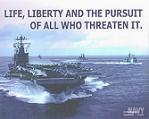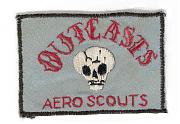The CV is once again obsolete, "long live the CV!".
Or should it?
Aircraft were going to make surface ships obsolete, or so Billy Mitchell argued. Tac nukes made fleets obsolete in the late 60s and early 70s. Backfire bombers and conventional cruise missiles killed them off again in the late 70s early 80s. In the late 80s, and 90s wake homing torpedoes did them in. Now its antiship ballistic missiles.
We have been through multiple periods when ships, CVs in particular were "sitting ducks" - yet we have dropped a whole lot of warheads on foreheads with a perrenially obsolete platform.
Gazing into your crystal balls, is this "it" and finally the stake is about to be put into the heart of supercarriers? To surface ships in general? Is the risk to them to great for the role they have played delievering ordnance from 5 acres of soverign US territory placed where we want it?
If we slashed our CV force, would that significantly affect our success in future small wars? Would any of you pointy end of the spear types know they were gone? Can we provide striking power in support of land operations with missiles from small ships and intercontinental land-based air?










Bookmarks